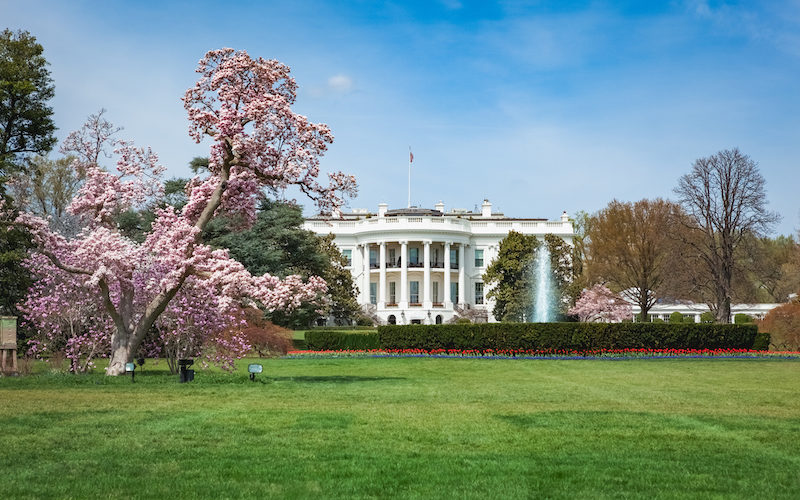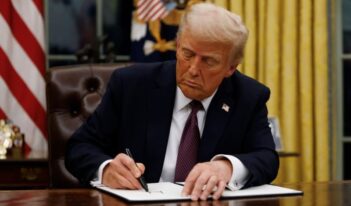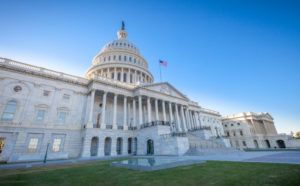
Strategies used by the Trump Administration will serve as a blueprint for future Presidents.
For some time, Presidents have used their authority over regulatory agencies to make policy, in a process that Justice Elena Kagan, while still a law professor, termed “presidential administration.”
When a new President comes into office after an inter-party transition, it is also typical for that President to work to undo or roll back some of the prior President’s regulatory achievements. Presidents before Donald J. Trump used their executive power to withdraw proposed rules and final rules not yet published in the Federal Register, pursuant to “stop-work” orders directed at agency heads. And they worked to repeal regulations through notice-and-comment rulemaking.
But when President Trump came into office he did not stick to the typical playbook.
Instead, he also made aggressive use of three other instruments—Congressional Review Act disapprovals, requests that courts hold in abeyance pending cases challenging Obama-era regulations, and suspensions of final regulations. Through these strategies, the Trump Administration was able to reach a far greater proportion of regulations than would have been possible under prior practices. And in this way, the Trump Administration has ushered in a new era of aggressive regulatory rollbacks that is likely to become an enduring feature of American politics and to radically change the nature of the presidency.
The first tool that the Trump Administration has used, the Congressional Review Act, allows Congress to disapprove regulations through streamlined procedures. The Act bypasses the usual sixty-vote requirement to overcome a filibuster in the Senate, thus allowing more partisan bills to pass. And after an election, the Act’s timing requirements allow a new Congress and President several months to review and disapprove any regulation that was issued in the waning months of a prior administration. For example, after President Trump was inaugurated in January 2017, rules issued after early June 2016 were at risk of disapproval under the Congressional Review Act.
Prior to the Trump Administration, this little-noticed statute had only been used one time, by the George W. Bush Administration to disapprove a Clinton-era ergonomics rule. But after Trump came into office, the statute was used to disapprove 16 regulations, on issues ranging from gun ownership to health care to environmental protection.
The Trump Administration’s successful use of the Congressional Review Act demonstrates that it is a powerful option for any President whose party also controls both branches of Congress. And the threat of a Congressional Review Act disapproval now hangs over any new President, putting pressure on agencies to finalize important rules before the summer prior to an election.
A second tool that the Trump Administration used grew out of the fact that many challenges to important Obama-era regulations were pending in court when Trump came into office. The Trump Administration gained an advantage in its repeal efforts by asking courts to hold those pending cases in abeyance.
Abeyances are intended to save judicial resources by allowing a court to hold off on deciding cases where an agency rule might imminently be changed. Such benefits are most likely to accrue when litigation is in its early stages. Typically, administrations in the past have requested abeyances in challenges only where briefing and argument had not yet occurred. The Trump Administration, by contrast, made aggressive use of abeyance requests, asking for them in many pending cases where briefing was complete and even where argument had already happened.
Abeyances serve a new administration because they help avoid the risk that a court will uphold a former administration’s rule and, in the process, potentially eliminate arguments to repeal the rule that the agency may have invoked. For example, if a Trump agency intended to argue that an Obama-era rule should be repealed because it was illegal, but a court had already ruled that it was legal, that potential justification would disappear.
The best example of how an abeyance helped the Trump Administration was with President Obama’s Clean Power Plan, the rule limiting the greenhouse gas emissions from existing power plants. The Supreme Court had issued a stay of the rule that was to last as long as the case remained pending. By obtaining an abeyance, the Trump Administration was able to keep a rule that it deeply disliked from ever coming into effect.
Because of the benefits of an abeyance, future administrations are likely to find them an attractive tool and to request them even in cases that have been briefed and argued. Any rules that are still undergoing judicial review at the time of a transition are likely to face this risk. As a result, when planning for finalization of new rules, a new administration will in the future need to think about the length of time it takes for rules not only to be made final but also to go through judicial review.
Regulatory suspensions are a third tool that the Trump Administration has used in distinctive ways. Suspensions allow an agency to defer compliance by either postponing the compliance dates or putting off a regulation’s effective date, prior to working to change or repeal the regulation’s substantive requirements. Prior administrations used suspensions in limited circumstances, such as to put off compliance with a rule that was issued in the very last days of the prior administration, and they typically issued suspensions that were of a short duration only. The Trump Administration has used suspensions far more aggressively, suspending rules that had already become effective and often suspending rules indefinitely.
These suspensions met stiff resistance in court and many suspensions were vacated, but agencies may be able to promote their objectives through suspensions regardless of potential court losses. Because of the limited legal resources of potential plaintiffs, some legally problematic suspensions may never face a challenge. And by using a strategy similar to the arcade game of “whack-a-mole,” agencies can withdraw a challenged suspension and replace it with a different suspension or with a repeal that does not have the same legal problems as the original suspension, thus further taxing the resources of potential challengers.
Suspensions can be useful to an administration interested in deregulation because a rule can be much harder to repeal once it is formally implemented. Even a pro-regulatory administration could find suspensions useful because, assuming no challenge is brought, the suspension could help keep a disfavored policy from taking hold.
Because of these three aggressive rollback strategies, future one-term Presidents are unlikely to see a significant portion of their regulatory output on important matters survive. Issuing a single regulation can stretch through almost all of a President’s term. And judicial review and implementation regularly stretch beyond the term. As a result, in the event of an inter-party transition after one term, it is likely that many of that President’s rules will be at risk of Congressional Review Act disapprovals, abeyances, and suspensions. In fact, in the current age of tit-for-tat politics, it is completely possible that future administrations will employ even more rollback tools and push norms even further to unsettle the prior administration’s regulations.
The risks posed by these aggressive rollback strategies have been apparent as the Trump Administration works to move its signature deregulatory efforts through the rulemaking process. Because it was finalized only last year, the Trump Administration’s repeal of the Clean Power Plan is still in the early stages of litigation, making it likely that a future administration could seek an abeyance in that case and start the process of rolling back the repeal itself. The Trump Administration has only just finalized its replacement to the Clean Water Rule, making it possible that a new administration could consider a suspension and an abeyance in any challenge to the rule. And the Trump Administration has yet to finalize its planned rollback of vehicle emissions standards, even though the cutoff to be safe from the Congressional Review Act is fast approaching.
Given that future Presidents will have no assurances that their party will remain in control after one term, Presidents wishing to ensure that they make lasting regulatory policies will need to begin working on political appointments and rulemaking plans during the transition period before and after an election. First-term Presidents will need to weigh whether to wait on potentially controversial rules until after being reelected—when the risk of rollbacks increases—or to issue them before being reelected, when rules might cause political backlash. To help avert the risk that both houses of Congress fall into the hands of the other party, putting the Congressional Review Act into play, Presidents may find it advisable to become more involved than previously in congressional campaigns throughout their presidency.
These new pressures are also likely to mean that a single electoral victory will be insufficient to implement significant policy priorities through regulation. All told, these changes are likely to result in a significant reconceptualization of presidential power.
This essay draws on the authors’ article, “Regulation in Transition,” published last year in the Minnesota Law Review.
This essay is part of a five-part series, entitled Debating the Repercussions of Trump’s Deregulatory Agenda.





